Heat stroke in horses associated with over-exertion is a significant issue in hot, humid countries. It should not be overlooked in the UK, particularly in unfit, overweight horses or those carrying a thick coat. As a horse sweats, he loses mostly water and electrolytes, or body salts as they are frequently called. If both these constituents are lost and not replaced, a horse will become dehydrated, affecting his performance.
If a rider does not detect the early signs of fatigue in their horse and stops, more significant problems can result, such as thumps, muscle disorders, and heatstroke.
What is Heat Stroke in Horses?
Heat Stroke is when the horse overheats, and his body-cooling systems are overloaded and cannot cool him down. If not caught early, this can lead to the alarming combination of heatstroke and dehydration, known as exhausted horse syndrome.
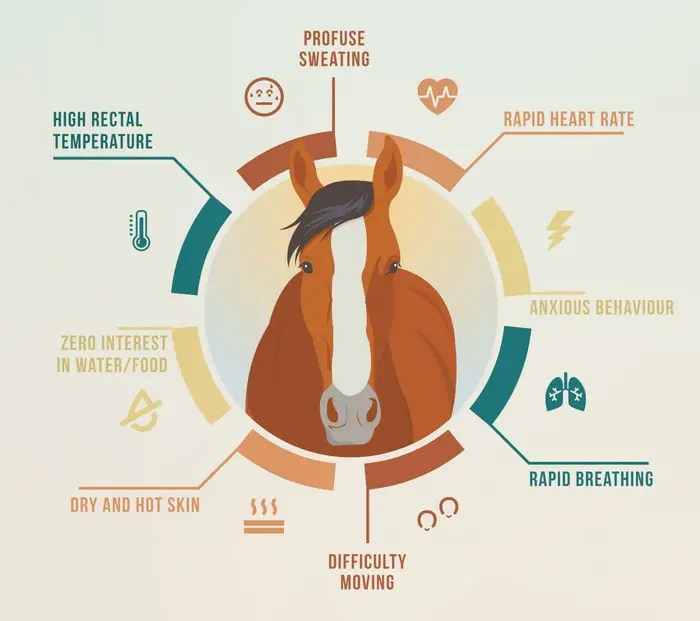
Seek Immediate Veterinary Help.
Try to prevent the horse from becoming over-heated, overtried, or dehydrated. All these conditions are potentially serious, and the affected horse will benefit from rapid, aggressive treatment, so it is highly advisable to prevent heat stroke in equines.
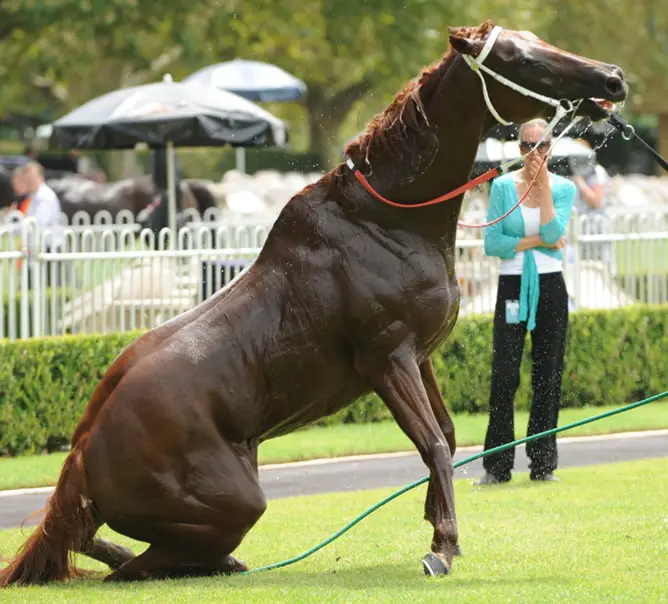
Preventive Strategies of Heat Stroke in Horses
Heat stroke prevention strategies are more important than treatment. As a horse owner or rider, you must have a clear idea about heat stroke’s causes and prevention techniques in a horse. The measures are described briefly in the subsequent paragraph.
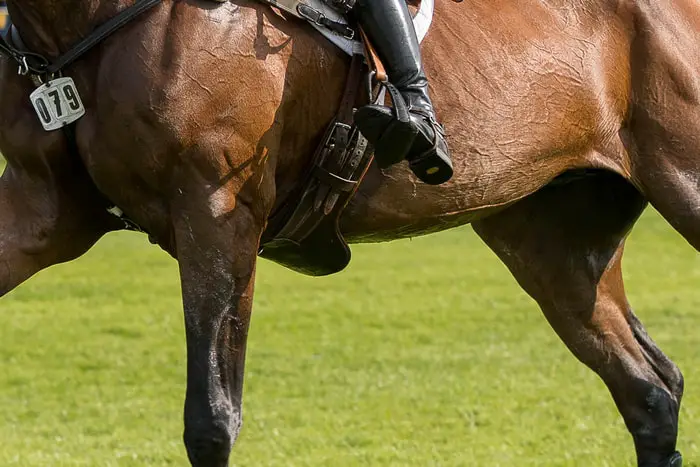
Ensure the Horse Drinks
Generally, an equine will drink more water than he needs. Exactly how much drinking water an individual horse will drink per day depends on the moisture content of the feed he eats, the work he is doing, and the customary climatic conditions. In hot, humid conditions, a horse will need to increase its water intake at least fourfold; hence dehydration is a risk.
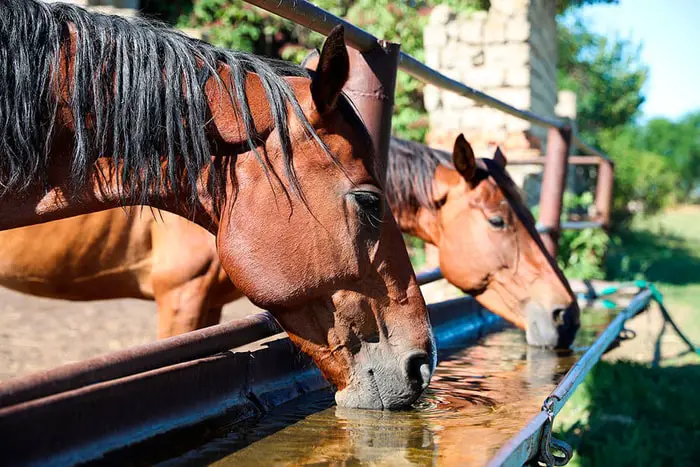
Recognize Dehydration
Relatively low levels of dehydration can affect performance. Traditionally, dehydration is checked by gently pinching a couple of centimeters of skin over the shoulder between finger and thumb, then releasing it in a healthy horse; theoretically, it rapidly pings back into place. In reality, even normal horses can have a slight crease of skin persisting longer than might be expected. A horse must be seriously dehydrated for a skin pinch test to be positive.

Performance may therefore be affected below the level that a skin pinch test would detect, so it should not have relied on without assessing other signs; these might include dry or tacky mucous membrane, and in severe cases, a weak, fast pulse, sunken eyes, and cool extremities.
It may not be evident that there is a problem, especially when dehydrated horses have been shown to sweat less than normal animals.
Replace Fluid and Electrolytes at Every Opportunity
Allow frequent small drinks when exercising, and do not withhold water before competing. Naturally, water and electrolytes will be replenished by a horse’s regular diet, but there may not be the opportunity to do so when competing. Rapid rehydration with water alone will dilute the body fluids and further disturb the electrolyte balance. It is now known that electrolytes, particularly sodium, are also needed if water alone is given.
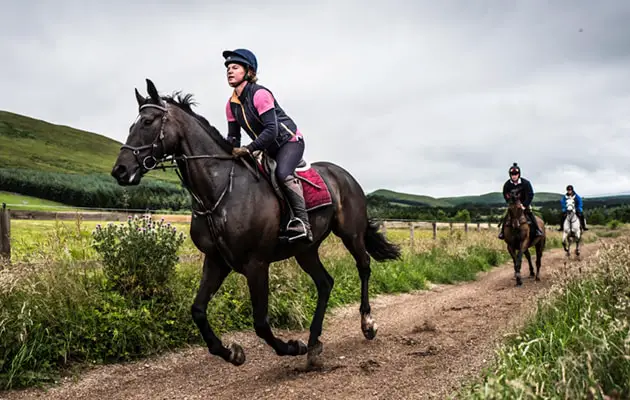
Equine athletes benefit from the same sort of thing, and a variety of equine oral replacement electrolyte solutions is available commercially. It is vital that they are made up at the correct concentration and that the horse will take them. Human athletes well recognize this, hence the large market for special sports drinks.
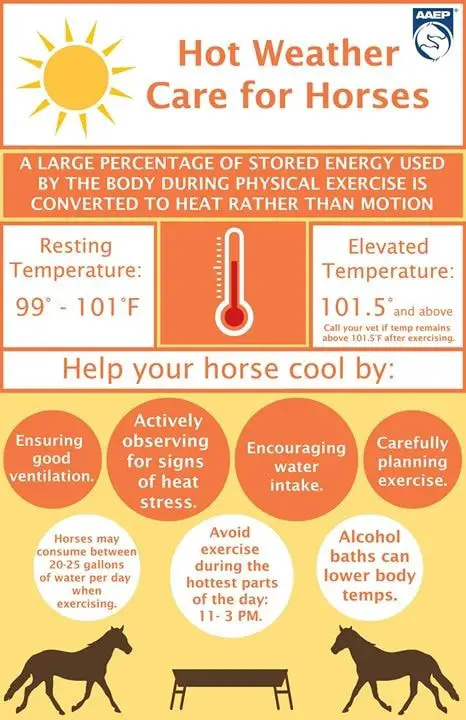
There is always a chance that by adding electrolytes to drinking, the horse will not drink it; professionals sometimes add apple squash or apple juice to make the taste; apple sauce also works quite well for making a paste. If horses are trained to do this before a competition, they usually accept it when they need salt supplementations.
When to Give Electrolytes
A horse can’t store extra electrolytes for future needs, so there is little point in giving extra electrolytes regularly, except to get him accustomed to the taste. If there are potential concerns, it may be sensible to give some just before a competition to ensure the horse is fully hydrated before it starts.
Under normal conditions, a healthy adult horse on a balanced ration will receive sufficient electrolytes, particularly from good quality forage and the trace-mineralized salt in top quality, commercially prepared, equine concentration mixes. Horses that sweat excessively may need additional salt added, at approximately 1 percent of their daily rations. It is usually optimum to give an electrolyte supplement with which the horse’s tastebuds are familiar as soon as possible after significant exertion with sweating.
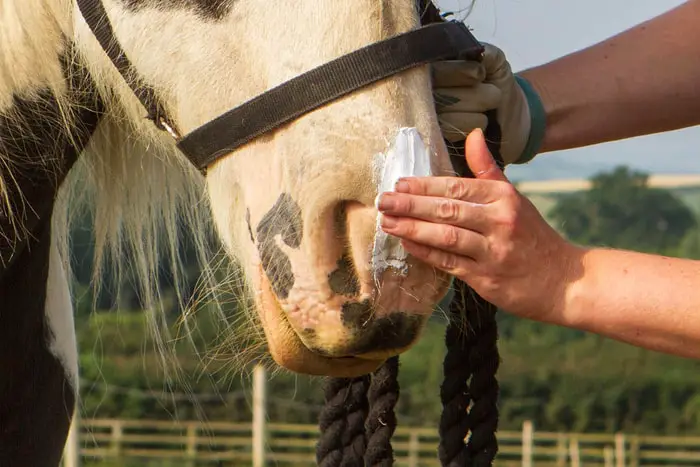
Cooling the Horses
Any horse with a very high temperature needs to be cooled down.
- Start by removing any extra rugs.
- If a horse has a high temperature in hot weather, it will help to bathe him with a sponge soaked in cool but not cold water.
- Concentrate on the areas behind and between the ears, the forehead, the underside of the neck where the jugular vein lies, the circumference, and dock.
- Avoid running ice-cold water over the back and quarters for long periods, as this can reduce blood flow to these muscle masses and increase heating in the body core.
- Ensure that the hot horse stands in the shade, ideally where there is a breeze, or use a fan.
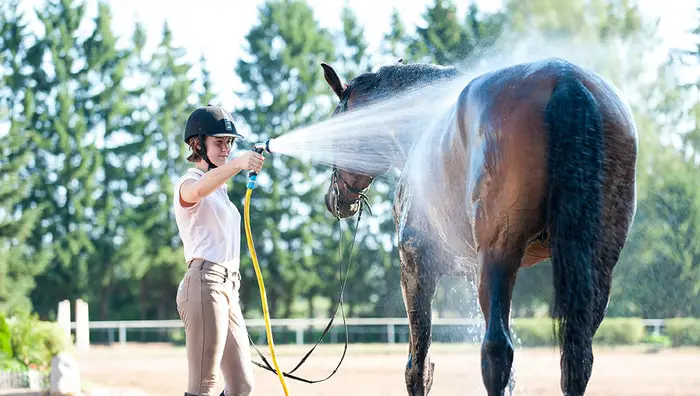
Final Advice on Heat Stoke in Horses
The heatstroke in the horses may occur due to excessive extortion during work or training. Heatstroke mainly occurs during hot hours of the day, especially during summer. In my article, I have discussed heatstroke’s possible cause and prevention strategies in horses. I think this information will help you a lot. A quick and timely decision will save the life of your horse.
If the above suggestions help you, please share them with your friends and stay connected to our website.